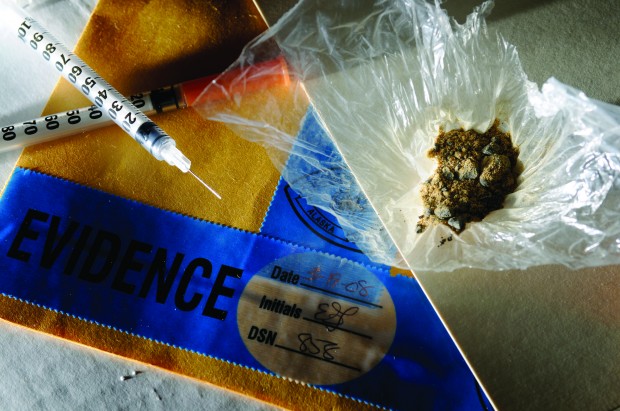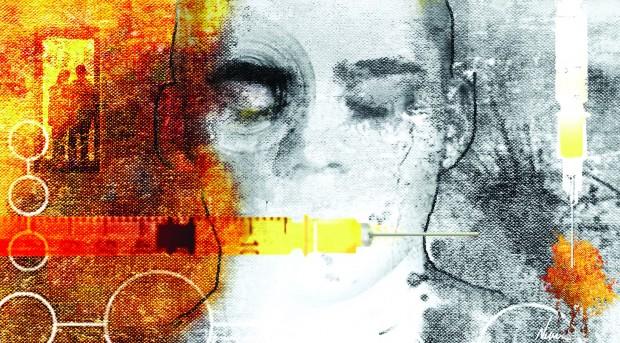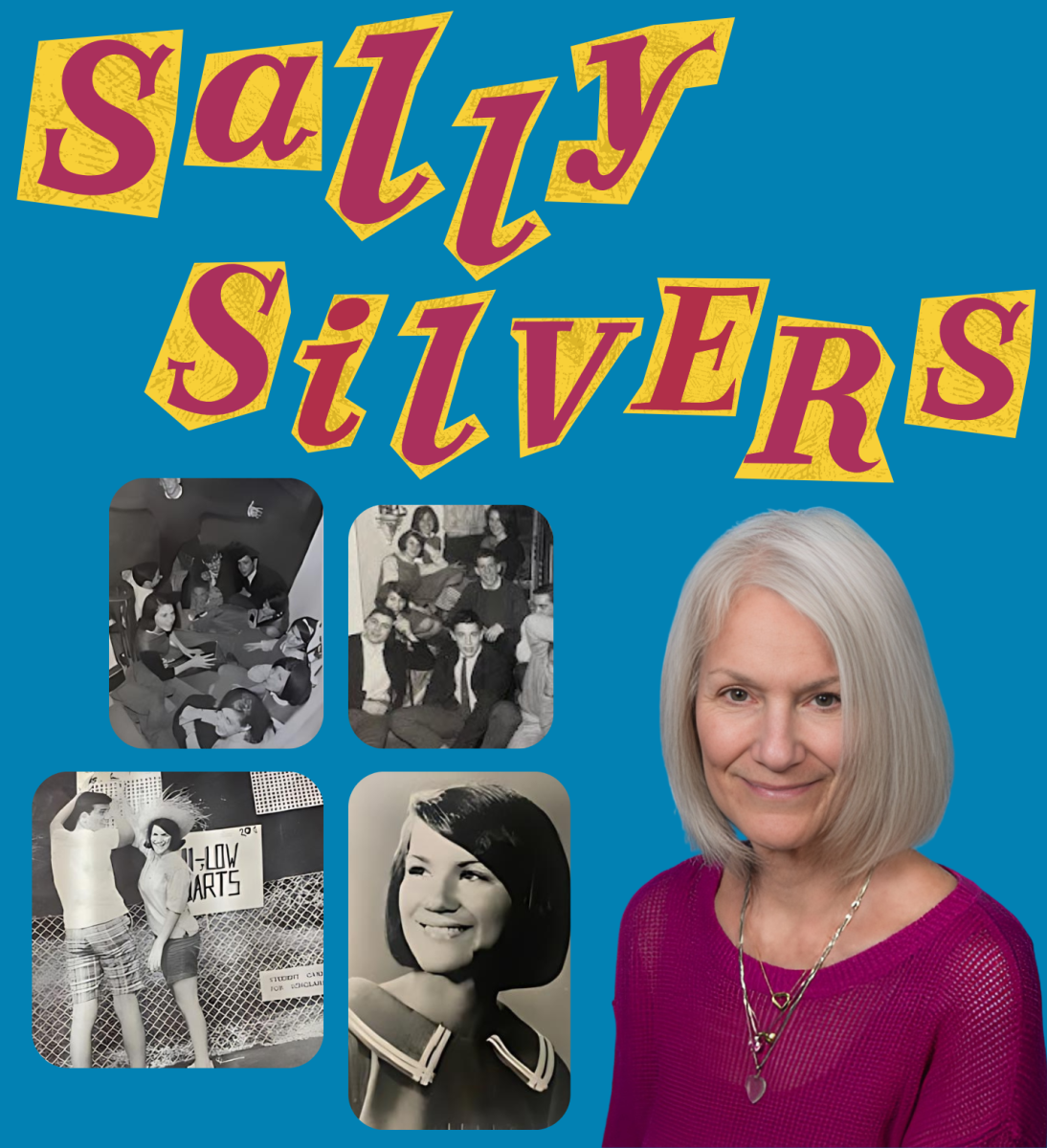Cheaper, purer, and more available than ever before, heroin is moving on from the cities. Now, with St. Louis County under siege, officials are taking action.
The statistics don’t lie: heroin use is on the rise, a fact that is putting the denizens of St. Louis County on edge. Mirroring national trends, heroin usage has soared in the past couple of years, particularly among teen groups. Increasing availability, coupled with less understanding of its effects, has made heroin a strong force on the teen drug circuit.
A Dangerous Obsession
For CHS student John Smith*, the goal was once to get some heroin. The first time that he finally snorted some, the results were not

encouraging.
“I took much more than I should have,†he said. “I was pretty much incapacitated, lying on my bed. I was afraid I was going to die. I tried not to go to sleep, because I knew that if I did I wouldn’t wake up.â€
The next morning, when he woke up, Smith did heroin again.
Smith’s use continued, starting with just a couple times a week. Several months later, he was snorting heroin several times a day. Reality became a dream.
“It’s not like I’ve forgotten things: I can remember everything, except all my memories are really dreamy,†he said. “They’re clear, but very weird.â€
This lasted until his arrest for possession, which resulted in his admission into rehab. Now, looking back, Smith recalls the feelings that pervaded his months-long stint with heroin.
“I felt really dirty the whole time. I would compare it to pulling an all-nighter: the next day, you just feel really dirty.â€
However, Smith does not actually regret his usage. In fact, he views it as a turning point in his life, a tipping towards his road to recovery.
“I don’t regret it. I feel like it was an important part of my life, and I value it just as much as my other experiences.â€
As for others using heroin, or any other drug, recreationally, Smith has no qualms. The only problem, he says, is when a pastime turns into an obsession.
“When it becomes addictive is when it becomes a problem. When it becomes a part of you.â€
Troubling Reports
Similar to morphine, heroin is derived from opiate poppies. Prices for one “button,†or one-twentieth of a gram, of heroin tend to range from $10 to $25, making recreational use all the more appealing for its relative cheapness. The euphoric high typically associated with the drug lasts about 3 to 4 hours, and one dose tends to run cheaper than a six-pack of beer.
“For someone who wants to experience a high, and who’s underage, they can’t go out and buy a six-pack,†CHS SRO John Zlatic said. “But maybe they can find someone who can get them a couple of buttons.â€

Heroin use is most commonly associated with prescription pain killer abuse. Drugs such as oxycontin, oxycodone, and vicodin are also opiate based, and so often serve as “gateway drugs†to heroin usage. According to Zlatic, users of prescription drugs who no longer want to pay the high costs of maintaining their addiction turn to heroin for a comparable, but cheaper, high.
Recent usage statistics report these rises. Although still less common than more mainstream substances, such as marijuana or alcohol, heroin use has still increased over the past few years. According to a recent study compiled by the National Institute on Drug Abuse, 1.6 percent of high school seniors have reported using heroin at least once, a jump from the previous year’s 1.2 percent.
Local statistics, however, are far more sobering. Instead of dealing with usage, however, County statistics tend to deal with death rates. In 2001, 10 people in the area died from a heroin overdose. That number jumped to 60 in 2010, and estimates for 2011 put the new number still higher.
The tendency, though, is to disbelief these statistics, as St. Louis County is generally regarded as safer than the city. Dan Duncan, the Director of Community Services for the National Council on Alcohol and Drug Abuse (NCADA), attributes this disbelief to one simple concept: separation.
“The enemy is ourselves: our own family, friends, neighbors,†Duncan said. “We like to think that people who use drugs are over tbere, but they’re really right here in our community.â€
Captain Chuck Boschert of the West County Precinct went on to confirm this opinion: the drug is no longer just for the city.
“Heroin is moving out into the suburbs,†he said. “And that is a big concern for us.â€
And why the sudden jump? It can be boiled down to three main categories: methods of use, purity, and relative cost. Straying from the older, solely injected style of use, heroin can now be ingested orally or through snorting, which adds to the allure.
However, as Kate Tansey, the Executive Director of the St. Louis County Children’s Service Fund, explains, heroin usage rarely stops at just snorting.
“Even if they do start out smoking and snorting it, they will eventually inject it, because of the tolerance problems,†Tansey said.
Additionally, heroin is easier to procure than ever before. What was once accomplished through long, convoluted chains of contact can now be achieved by just a conversation.
“Unless you’re so socially inept to the point where you can’t talk to three different people, then you can get it,†Smith said.
Not Even Once
With these statistics and facts in hand, many local law enforcement and medical officials are taking a stand to help reduce the rise in heroin use. The St. Louis County Police Department, the NCADA, and other organizations are partnering to address the problem.
Together, the organizations have come up with a three-pronged plan to deal with heroin-related crimes, based on the principles of education, treatment, and prevention. As well as presenting vital information online, the site has also organized several town hall meetings to inform the public.
The most recent meeting took place on Sep. 21 at Marquette High School, and featured a blend of police officers, doctors, treatment specialists and personal stories. Starting out the night, Duncan explained why such meetings are necessary for proper prevention.
“The truth is, if you look at what Missouri is spending on drug education, it’s about a couple of million dollars,†Duncan said. “It’s one-tenth of what we should be spending.â€
Thus, the burden of education has been taken up by the coalition, with the hopes that getting the word out will help decrease the overdose statistics currently seen. Education, for some, can be a defining point in the decision to use.
“I think that the more knowledge you have about anything before getting into it, the better off you are,†Smith said.
Concluding the meeting was Tom Heard, who shared the story of his son, Michael, who died about a year ago from a heroin overdose. With quiet strength and dignity, he shared how opiates slowly consumed his son’s life. Drug use reduced the happy, playful son to the depressed individual he was at the time of his death.
These true accounts add a rawer, more emotional aspect to what may have otherwise been simply another drug prevention meeting. And that, for Zlatic, may be just what is needed.
“Maybe that kind of impact is what needs to happen for kids to realize, ‘Wow, this isn’t really about the freedom to do what I want. I really need to look at the bigger picture, with other people and their lives.’â€
*Name has been changed.







